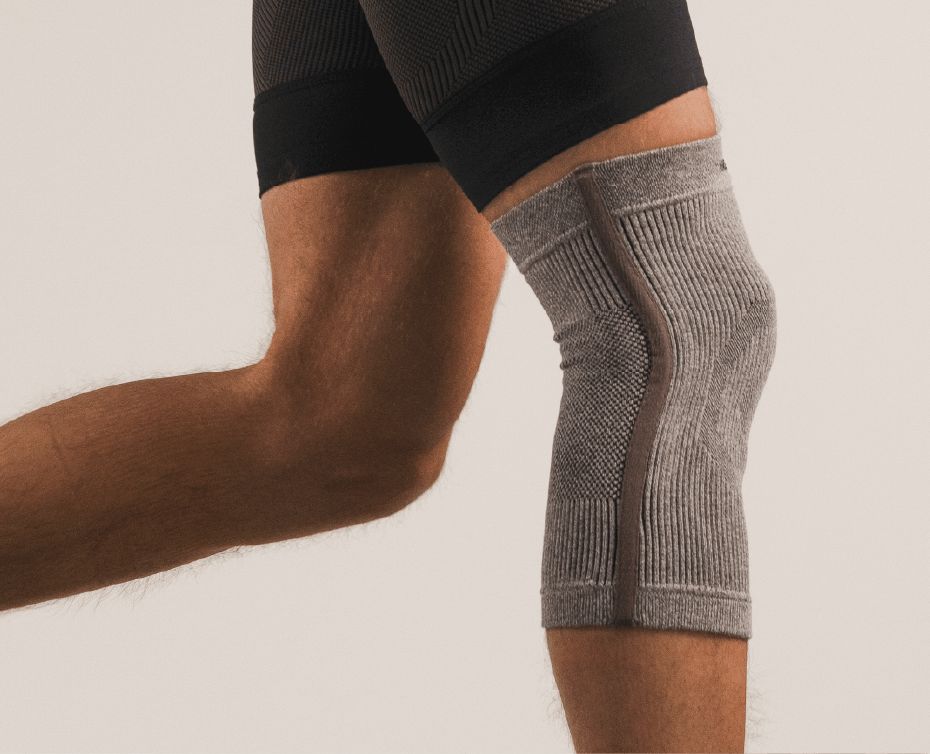Medically Reviewed By | Johannah Gregg, DNP FNP-C
If you find yourself wincing in discomfort each time you sit down or spend sleepless nights wrestling with relentless lower back pain, you are far from alone. In recognition of National Pain Awareness Month, we're focusing our attention on a shared struggle for many — back pain.
Back pain, and low back pain in particular, is a healthcare issue that impacts countless individuals globally. By understanding these back pain facts, you can gain insights into your own unique situation and find ways to improve your well-being and comfort.
1. Over 540 Million Globally Experience Back Pain
Back pain affects over a staggering 540 million people globally, underscoring the universal prevalence of this musculoskeletal discomfort. More than a minor discomfort, back pain can have far-reaching impacts on an individual and collective level.
2. Lower Back Pain Is the Most Common Kind of Back Pain
In the United States, eight out of ten people will experience back problems at some point, reflecting the alarming pervasiveness of this condition. When we look at global statistics, we find that 7.5% of individuals worldwide are dealing specifically with lower back pain, making it the most common form of back pain.
These figures underscore the fact that lower back pain — with possible causes as varied as poor posture to heavy lifting leading or tissue damage to degeneration in the lumbar region — is indeed the most common kind of back pain. “Evidence suggests that most low back pain is nonspecific. This means that there isn't necessarily one specific cause or origin to point to,” clarifies Katelyn Panawash, Doctor of Physical Therapy (DPT) and Board Certified Neurologic Clinical Specialist (NCS).
3. About 40% of Office Workers Deal With Back Pain
Back pain's onset is often linked to our work environment, particularly for those who work in an office rather than on their feet.
Remarkably, about 40% of individuals in such roles report lower back pain, often triggered by prolonged sitting. In fact, 54% of Americans who experience back pain spend the majority of their workday sitting, a lifestyle that can trigger the nerve-dense pain-spasm-pain cycle affecting not just the spine but extending to the hips and sacroiliac joints.
Research suggests that better-designed workspaces (standing desks and proper screen height) can help prevent up to one-third of these cases. Panawash highlights that “The next position is the best position. Regularly changing positions is good for the body. If you can, set an alarm for every hour while at work and find a new position whether that is taking a walk, going from sitting to standing, or finding a different position in your chair.”
4. Back Pain Costs the American Economy $635 Billion Annually
Beyond the physical discomfort, back pain presents a significant economic and public health challenge, costing the American economy a colossal $635 billion annually. As lower back pain disrupts work and daily activities, it accounts for 2.6 million emergency room visits in the US annually, putting added strain on the healthcare system.
5. Nearly Half of Seniors Suffer from Back Pain
The risk of chronic low back pain heightens with age. In the U.S., around six million older adults live with this discomfort.
A recent survey showed nearly 46% of adults aged 65 and older experienced back pain in the past three months, often due to natural physiological changes such as disc degeneration and increased stiffness. This correlation underlines the need for focused care and support for our older population. “Working with a Physical Therapist is a great way to learn more about your specific needs, the science behind pain, and what steps you can take to improve overall function,” Panawash highlights.
6. Chronic Back Pain Disrupts Sleep
Sleep and pain have a closely intertwined relationship. There is an average of 42 minutes of sleep debt every night when people suffer from chronic pain, including chronic back pain. These statistics highlight the significance of sleep's restorative functions for our bodies and its crucial role in pain management.
Adequate, quality sleep helps our muscles relax and eliminate lactic acid buildup, providing relief and recovery from the day's physical exertion. However, chronic back pain can interrupt this cycle, leading to poor sleep, exacerbating back pain symptoms, and creating a continuous, troublesome cycle. “Talk to your Physical Therapist about this. Based on your specific pain and movement biases they can offer suggestions that may help improve your sleep,” says Panawash.
7. Back Pain Is a Leading Cause of Global Disability
Back pain is more than just discomfort; it can lead to substantial disability. A range of data suggests that back pain is one of the leading causes of disability worldwide.
This troubling fact further emphasizes back pain's vast public health implications, underscoring the urgent need for effective solutions that maintain and support health.
8. Misconception: A Weak Core Is a Common Cause of Back Pain.
“What we do know through evidence is that low back pain causes can't be reduced to one single origin, especially in chronic pain. Evidence does show that participating in strength training is beneficial, but specifically core strengthening isn't necessarily.
The stronger we are, the more resilient we are to take on life's demands. If low back pain is impacting your ability to do things important to you, please seek out a Physical Therapist who can provide education on pain neuroscience and prescribe a progressive strength program that meets your body and pain needs,” highlights Panawash.
That said, regular physical activity targeting the core muscles may prove to be beneficial in mitigating the risk of back pain, but research is ongoing.
9. The Majority of Back Pain Is Nonspecific
Most back pain cases aren't caused by severe medical conditions, but that doesn’t mean it is easy to find one root cause.
“People are quick to blame disc degeneration or other natural parts of the aging process for their pain, and research shows that yes some people coming in complain about significant back pain may have imaging done that show degeneration, but another individual of a similar age with no back pain could have imaging done and have similar or even more degeneration on imaging and report no symptoms at all.
This doesn’t discredit anyone's pain, it just highlights that there isn’t a simple answer and can be empowering to those who are suffering from low back pain, that just because the imaging says one thing doesn’t mean you are going to have pain forever,” says Panawash.
This highlights that education about low back pain can be the first step in the healing process. Seek out a Physical Therapist or another healthcare provider who takes the time to explain the complexities to you in a digestible manner. Take time to try different modalities, exercises, and therapies. For some people, conservative measures work, and for others, surgery works. Have conversations with your providers to find a treatment plan right for you.
10. Back Pain Can Impact Our Mental Health
Chronic back pain doesn't only affect our physical well-being; it can also weigh heavily on our mental health. The constant discomfort can lead to feelings of isolation. Reach out to healthcare professionals, find supportive communities, and practice self-care activities, such as mindfulness and relaxation exercises.
Remember, your mental health matters just as much as your physical health in your journey toward pain management.
Incrediwear - A Tool for Back Pain Prevention and Relief
Prevention and effective pain management are crucial for back pain, encompassing a healthy lifestyle, proper posture, and physical activity. Tools like the Incrediwear Back Brace, embedded with semiconductor elements to maintain healthy blood flow, support a healthy musculoskeletal system, and provide relief.
Our Back Brace aims to soothe discomfort and support natural healing capabilities. Supporting the lower back aids posture and helps soothe flare-ups, making it a practical tool for proactive back health management.
Of course, if back pain is severe or consistent, it is important to speak with a health professional. Depending on the cause of back pain, your doctor may suggest physical therapy, chiropractic care, or acupuncture or refer you to an orthopedic surgeon for further support.
Take Charge of Your Back Health With Incrediwear
Back pain affects a significant global population and is a leading cause of disability. Yet we can reduce back pain risk by understanding common causes such as poor posture or lack of core strength and adopting prevention measures such as using tools like the Incrediwear Back Brace.
Back pain is common, but it doesn't have to be inevitable. This National Pain Awareness Month, let's empower ourselves with knowledge and supportive tools to help keep back pain from hindering our active lives. Let's use our understanding of back pain to take charge of our health.
Sources:
Back pain: how to live with one of the world’s biggest health problems | The Guardian
Monitor height ergonomics: A comparison of operating room video display terminals | PMC
The Economic Costs of Pain in the United States - Relieving Pain in America - NCBI Bookshelf
Back to basics: 10 facts every person should know about back pain | EMJ Journals
Why a Strong Core Can Help Reduce Low Back Pain | Cleveland Clinic
Read more

Medically Reviewed By | Dr. Kate Panawash, PT, NCS, DPT Football, known for its physical intensity and high-impact plays, poses inherent risks of injuries to players at all levels, from high school...

Medically Reviewed By | Dr. Kate Panawash, PT, NCS, DPT Neck pain is extremely common. According to Practical Pain Management, neck pain is the fourth most common type of chronic pain (after lower ...






Leave a comment
All comments are moderated before being published.
This site is protected by hCaptcha and the hCaptcha Privacy Policy and Terms of Service apply.